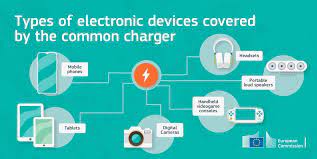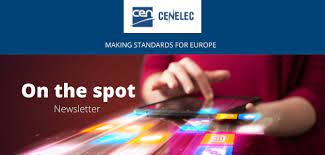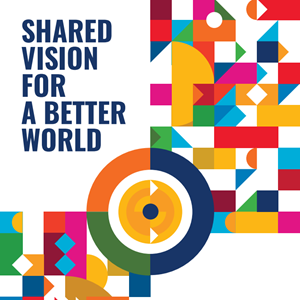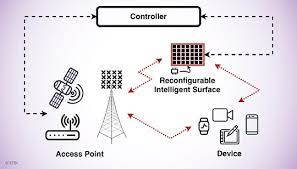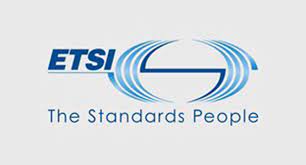The European Commission kick-starts two new Industrial Alliances: The Alliance for Processors and Semiconductor technologies, and the European Alliance for Industrial Data, Edge, and Cloud. The two new alliances will advance the next generation of microchips and industrial cloud/edge computing technologies and provide the EU with the capabilities needed to strengthen its critical digital infrastructures, products, and services. The alliances will bring together businesses, academia, users, as well as research and technology organisations.
Industrial Alliance for Processors and Semiconductor technologies: The Industrial Alliance on processors and semiconductor technologies will be a key instrument to further industrial progress in the EU in this area. It will identify and address current bottlenecks, needs and dependencies across the industry. It will define technological roadmaps ensuring that Europe has the capacity to design and produce the most advanced chips while reducing its overall strategic dependencies by increasing its share of the global production of semiconductors to 20% by 2030.
European Commission Proposes a Common Charger for Electronic Devices
The Commission takes an important step against e-waste and consumer inconvenience, caused by the prevalence of different, incompatible chargers for electronic devices. Years of working with industry on a voluntary approach already brought down the number of mobile phone chargers from 30 to 3 within the last decade but could not deliver a complete solution. The Commission is now putting forward legislation to establish a common charging solution for all relevant devices.
With proposal for a revised Radio Equipment Directive, the charging port and fast charging technology will be harmonised: USB-C will become the standard port for all smartphones, tablets, cameras, headphones, portable speakers, and handheld videogame consoles. In addition, the Commission proposes to unbundle the sale of chargers from the sale of electronic devices. This will improve consumers' convenience and reduce the environmental footprint associated with the production and disposal of chargers, thereby supporting the green and digital transitions.
CEN Published New Guidelines (ISO/TS?82304-2) on Health & Wellness Apps to Sort Best from the Rest
From counting calories to tracing COVID-19, there are hundreds of thousands of health and wellness apps on the market. However, many have access to highly sensitive personal information, whilst others may offer advice that is not always supported by scientific evidence. To effectively evaluate the quality and reliability of such apps, a new technical specification has just been published.
CEN ISO/TS?82304-2 ‘Health software — Part 2: Health and wellness apps—Quality and reliability’ brings together and builds on guidelines and requirements for apps by many local and national health organisations around the world to ensure they are safe, reliable, and effective. Recommended by the European Union in their European toolkit for COVID 19 tracing apps to "filter out qualitative and trustworthy health apps", the guidance provides an internationally-agreed set of specifications to assess the apps, with a scoring methodology that gives a 'traffic light' themed label. The Technical Specification will help the industry for health apps realize its potential in managing chronic diseases, tackling unhealthy lifestyles, and supporting ageing populations.
DIN, DKE & VDI developing the German Standardization Roadmap for Circular Economy
Together with the German Federal Ministry for the Environment, Nature Conservation and Nuclear Safety (BMU), the German Institute for Standardization (DIN) and the German Commission for Electrical, Electronic & Information Technologies (DKE) of DIN and VDE and the Association of German Engineers (VDI) have announced the launch of the German Standardization Roadmap Circular Economy. The aim of the Standardization Roadmap is to provide an overview of the status quo of standardization in the field of Circular Economy, describe the requirements and challenges for seven key topics, and identify possible concrete needs for action for future standards and specifications.
-
Essential support for climate targets: The Circular Economy is of particular importance in achieving the goals of the Green Deal and the Climate Change Act 2021. To achieve the ambitious climate protection targets, new and revised technical rules for the Circular Economy are now needed. The Standardization Roadmap Circular Economy will set the path for this, thus driving forward the green transformation of Germany and Europe.
-
Seven key topics set: The Roadmap will focus on the following key topics: Electrotechnology and ICT, batteries, packaging, plastics, textiles, construction & municipalities, and digitalization/business models/management. These are based on the key topics of the EU's Circular Economy Action Plan. With a German Standardization Roadmap for Circular Economy, specific national standardisation needs will be identified with the aim of feeding them into the European and international standardisation bodies.
ETSI Releases two Technical Reports to Support US NIST Standards for Post-Quantum Cryptography
In 2016 the US National Institute of Standards and Technology (NIST) announced their intention to develop new standards for post-quantum cryptography. They subsequently initiated a competition-like standardization process with a call for proposals for quantum-safe digital signatures, public-key encryption schemes, and key encapsulation mechanisms. NIST have stated that they intend to select quantum-safe schemes for standardization at the end of the current, third round of evaluation. The ETSI CYBER Quantum Safe Cryptography committee is pleased to announce the publication of two Technical Reports that give descriptions of each of the candidate schemes in the third round of the NIST standardization process:
-
ETSI TR 103 616 V1.1.1 (2021-09) "Quantum-Safe Signatures"
-
ETSI TR 103 823 V1.1.1 (2021-09) "Quantum-Safe Public Key Encryption and Key Encapsulation"
The descriptions contained in the reports are not intended to be used as substitutes for the detailed specifications submitted to the NIST process. Instead, the emphasis is on providing unified, concise descriptions of each of the schemes, using consistent notation and terminology, to facilitate understanding and easy comparison.
ETSI, which produces globally applicable standards for ICT, has launched a new Industry Specification Group on Reconfigurable Intelligent Surfaces (ISG RIS). The group has been created to review and establish global standardization for RIS technology.
RIS is a new type of system node leveraging smart radio surfaces with thousands of small antennas or metamaterial elements to dynamically shape and control radio signals in a goal-oriented manner. The technology will effectively turn the wireless environment into a service, inspiring a host of new use cases. These include enhancing key-performance-indicators for various systems such as coverage and capacity, as well as enabling new applications such as localization and sensing. As an example, an RIS can reconfigure the radio environment to sense human posture and detect someone falling, a very useful application for elderly care. RIS, thanks to its associated characteristics, is expected to serve as a key technology in future wireless systems, including for 6G.
ETSI’s new Industry Specification Group will work towards defining use cases, covering identified scenarios, and clearly documenting the relevant requirements with view to pave the way for future standardization of the technology.
ETSI's 5th Generation Fixed Network group (F5G ISG) has just released its first specification, ETSI GS F5G 003, entitled F5G Technology Landscape. In this specification, the ISG studies the technical requirements, existing standards and gaps for 10 different new use cases, for home, enterprises or industrial needs.
ETSI GS F5G 003 use cases include PON (passive optical network) on-premises and passive optical LAN. In this case, a PON system could connect end devices (like HDTV, HD surveillance cameras and VR/AR helmets) and provide higher data rate, better coordination, and controlled latency than current Ethernet and Wi-Fi mesh.
The high-quality private line use case focuses on optical transport networks (OTN) for governments, large companies, financial and medical institutions who need guaranteed bandwidth, low latency, five-nines availability, totally secured network, access to Cloud services and intelligent operation and maintenance of their connectivity. PON enables high quality but low-cost private lines for SMEs and offers higher performance, lower cost, better industrial adaptation, and easier operation for the industrial customers as well.







